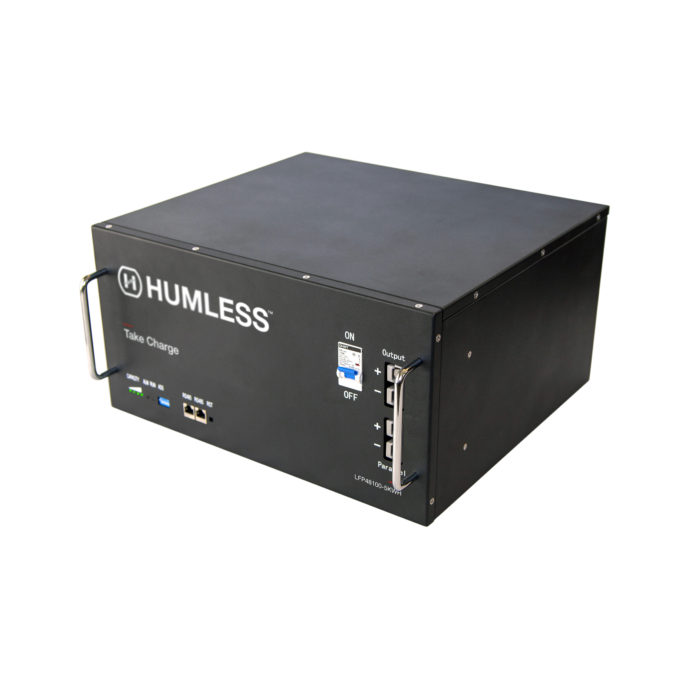The future of energy storage relies on pushing the envelope. We need battery solutions that have greater capacity, a high power potential, a longer lifespan, are sustainable, safe, and fit into the needs and wants of today’s conscientious consumers. Lithium ion batteries have become a go-to option in on-grid solar power backup systems, and it’s easy to understand why. However, as technology has advanced, a new winner in the race for energy storage solutions has emerged: lithium iron phosphate batteries (LiFePO4).
Lithium iron phosphate use similar chemistry to lithium-ion, with iron as the cathode material, and they have a number of advantages over their lithium-ion counterparts. Let’s explore the many reasons that lithium iron phosphate batteries are the future of solar energy storage.
Battery Life. Lithium iron phosphate batteries have a lifecycle two to four times longer than lithium-ion. This is in part because the lithium iron phosphate option is more stable at high temperatures, so they are resilient to over charging. Additionally, lithium iron phosphate batteries can be stored for longer periods of time without degrading.
The longer life cycle helps in solar power setups in particular, where installation is costly and replacing batteries disrupts the entire electrical system of the building. Solar panels and energy management systems currently have a life cycle of up to 20 or 30 years. A battery that remains efficient after more cycles will better match the lifespan of the solar power system as a whole.
Environmental impact. Unlike basic Li-ion batteries, lithium iron phosphate batteries are built with non-toxic materials: iron, graphite and copper. They are easily recyclable, even able to be repurposed as new batteries. In fact, recycled batteries are already available to consumers looking to lessen their environmental impact.
The longer lifespan of lithium iron phosphate batteries naturally makes them better for the earth. Manufacturing new batteries takes energy and resources, so the longer they last, the lower the overall carbon footprint becomes.
Additionally, the metal oxides in lithium-ion batteries have the dangerous potential to leach out into the environment. While batteries are intended to be disposed of safely, many wind up in landfills, causing severe health issues for anyone living nearby. Lithium iron phosphate batteries contain phosphate salts instead of metal oxides, which have a substantially lower risk of environmental contamination.
Safety. Perhaps the strongest argument for lithium iron phosphate batteries over lithium ion is their stability and safety. In solar applications, where batteries are often housed in residences or in close proximity to highly occupied office buildings, safety is an extremely important factor to consider.
Because lithium iron phosphate batteries have a lower energy density than the lithium-ion type, a LiFePO4 battery has to be larger than an Li-ion battery to hold the same amount of energy. However the trade off for space is that the chemistry is significantly more stable at high temperatures. Lithium iron phosphate batteries are virtually non-combustible, even when handled incorrectly. The less toxic nature of lithium iron phosphate batteries also mitigates the risks of allergic reactions, accidental poisoning, and other medical hazards.
Cost. The question on the minds of consumers and manufacturers is inevitably: which is cheaper to produce? Luckily, in addition to all of the practical benefits of lithium iron phosphate batteries, they are also the more economical option.
There are a few reasons for this. The raw materials in lithium iron phosphate batteries are less rare, and therefore less expensive, than the cobalt in lithium-ion batteries. Second, the materials in lithium iron phosphate batteries are safer to handle, so they are easier and cheaper to manufacture. And finally, the longer life-cycle of LiFePO4 batteries compared to Li-ion batteries passes on savings to the consumer, since the battery has to be replaced less often.
Depth of discharge. The deep discharge capacity of lithium iron phosphate batteries protects them from damage due to depleting the energy in the battery too far. LiFePO4batteries can be completely discharged without affecting the delivered capacity. This advantage makes lithium iron phosphate batteries ideal for solar setups, because multiple batteries can be connected to increase storage capacity. The batteries can then be discharged at different rates without any damage.
Discharge rate. Lithium iron phosphate batteries have the added advantage of a steady discharge rate. When needed, they can also discharge at a higher rate than lithium-ion batteries. This means that when the power goes down in a grid-tied solar setup and multiple appliances come online all at once, lithium iron phosphate backup batteries will handle the load without complications.
While both lithium-ion and lithium iron phosphate batteries are a reasonable choice for solar power systems, LiFePO4 batteries offer the best set of advantages to consumers and producers alike. While batteries have made great strides in the last twenty years, for solar power to advance to its full potential in the marketplace, energy storage solutions must rise to the occasion. With a longer shelf life, less environmental impact, higher stability, better performance and lower cost, lithium iron phosphate batteries offer the best path forward.
Glenn Jakins is the CEO of Humless.
— Solar Builder magazine


Leave a Reply
You must be logged in to post a comment.